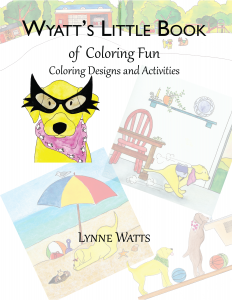Kids and Rewards
Kids and Rewards
What motivates children to want to learn?
Is it possible to motivate children without using rewards and treats?
Could it be that using rewards is actually causing students to be unmotivated?
Where does motivation come from anyway?
Some Surprising Research
In his book, Drive, The Surprising Truth about What Motivates Us, author Daniel Pink reviews a lot of research that confirms what any parent or educator who has tried to motivate children with carrots (rewards or incentives) and sticks (punishments) knows; it is not an effective way to create a lifelong learner. While children (and adults for that matter) will often perform to achieve a reward in the short term, in order to maintain interest and commitment, one must create an ever expanding system of rewards. What this means in real life is that while a piece of candy may be rewarding the first time a child gets one, before you know it, a whole candy store is necessary to keep her engaged.
There’s More to the Story
Here’s the really amazing thing the research shows about rewards; once you start giving a reward and then take it away, the student is less likely to continue the activity even if they initially found the activity itself rewarding. This means in the long run, rewards are actually detrimental to the overall intrinsic motivation of the student. In one study of preschoolers, students who initially chose to color in their free time and who were later rewarded for choosing to color, did not return to coloring once the reward was taken away. Schools actually sabotage learning with reward systems because children become dependent on outside forces for motivation and lose their natural curiosity.
What is the alternative? What is a more effective way to teach?
- Develop a relationship with students- Because they know and understand their students, effective educators know and celebrate their student’s strengths.
- Give students ownership of their learning-Teachers are responsible for providing a creative learning environment, but ultimately students have responsibility for taking the initiative. Help kids take that initiative by helping them develop a vision for the future that includes the positive results of their learning and achievements. This doesn’t just include things like getting into college or a better job, but the pleasure and enjoyment of learning and sharing things that make a difference in their world.
- Give students a choice-while students don’t always have a choice about what it is necessary to learn (because of curriculum requirements teachers don’t have that choice either!), they can have a choice in many aspects of how, when and where they learn. Creativity and critical thinking is encouraged.
- Make lessons relevant- This doesn’t mean teachers have to be knowledgeable about every current fad, only that they relate the information to the practical world. What if learning a science topic could mean saving turtles or rescuing manatees? What if learning math could mean saving more money or spending it wisely?
- Teach with personality style in mind– Students like adults are motivated by different things. Some personalities are motivated by getting results-teach them to set goals and measure their accomplishments. Some personality styles are motivated by having fun and recognition of their unique talents- create an engaging environment that is interactive. Some personality styles are motivated by peace and harmony- create an environment that provides appreciation and encouragement. Finally, some personality styles are motivated by being right and good value- provide a stimulating environment with clear rules and expectations. For more on motivation and personality style, check out this post: Personality Style and Motivation
Teaching without carrots and sticks is possible but it takes a new and creative mindset on everyone’s part.
Wyatt’s Little Book of Lesson Plans,
Worksheets and Games
Just for you! Here are activities, lesson plans, discussion questions, coloring sheets, word search puzzles and games for each of the nine Wyatt the Wonder Dog Books. Over 75 pages of ideas so that you can create lessons on cooperation, teamwork and leadership skills to quickly extend and incorporate the Wyatt stories.![]()

